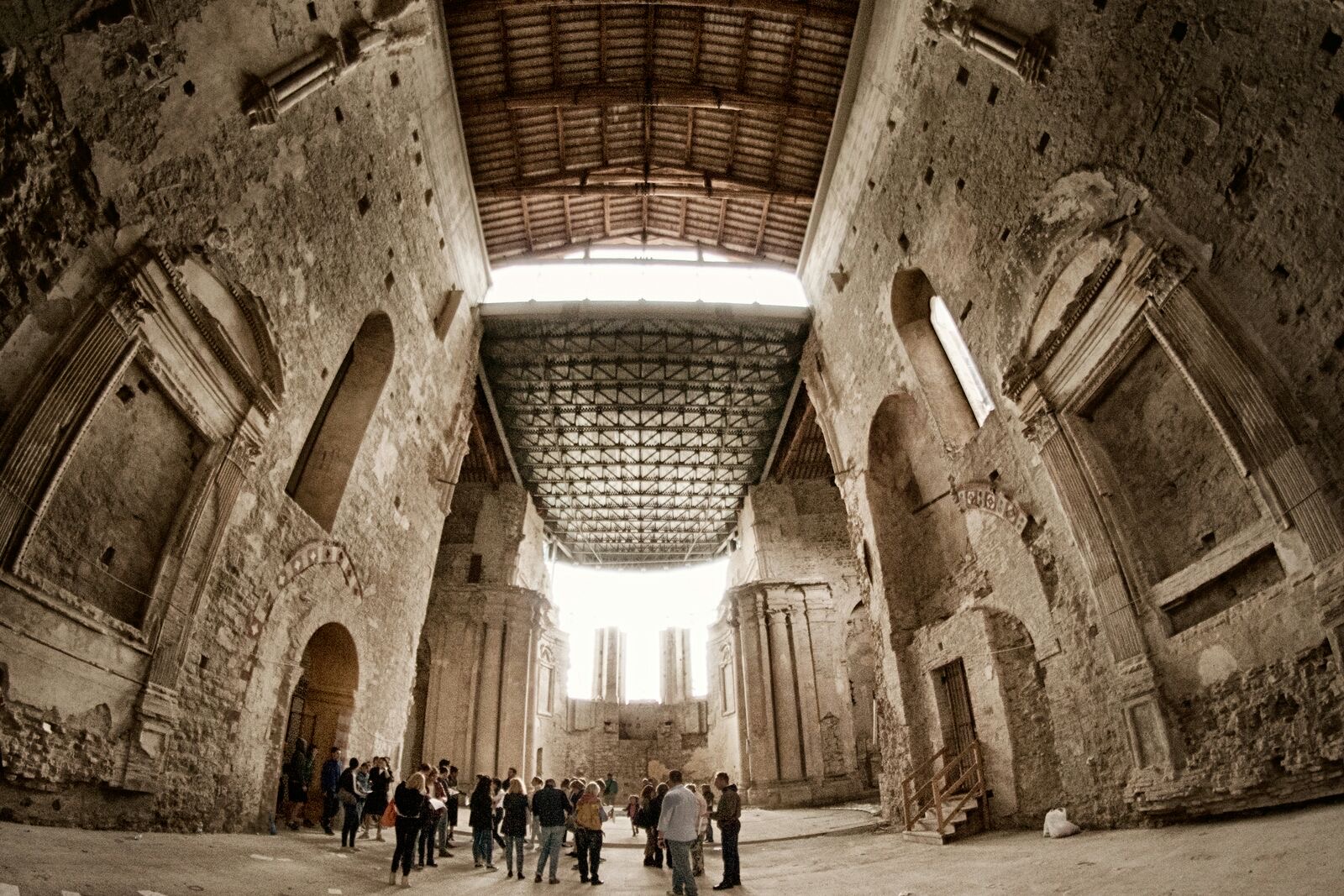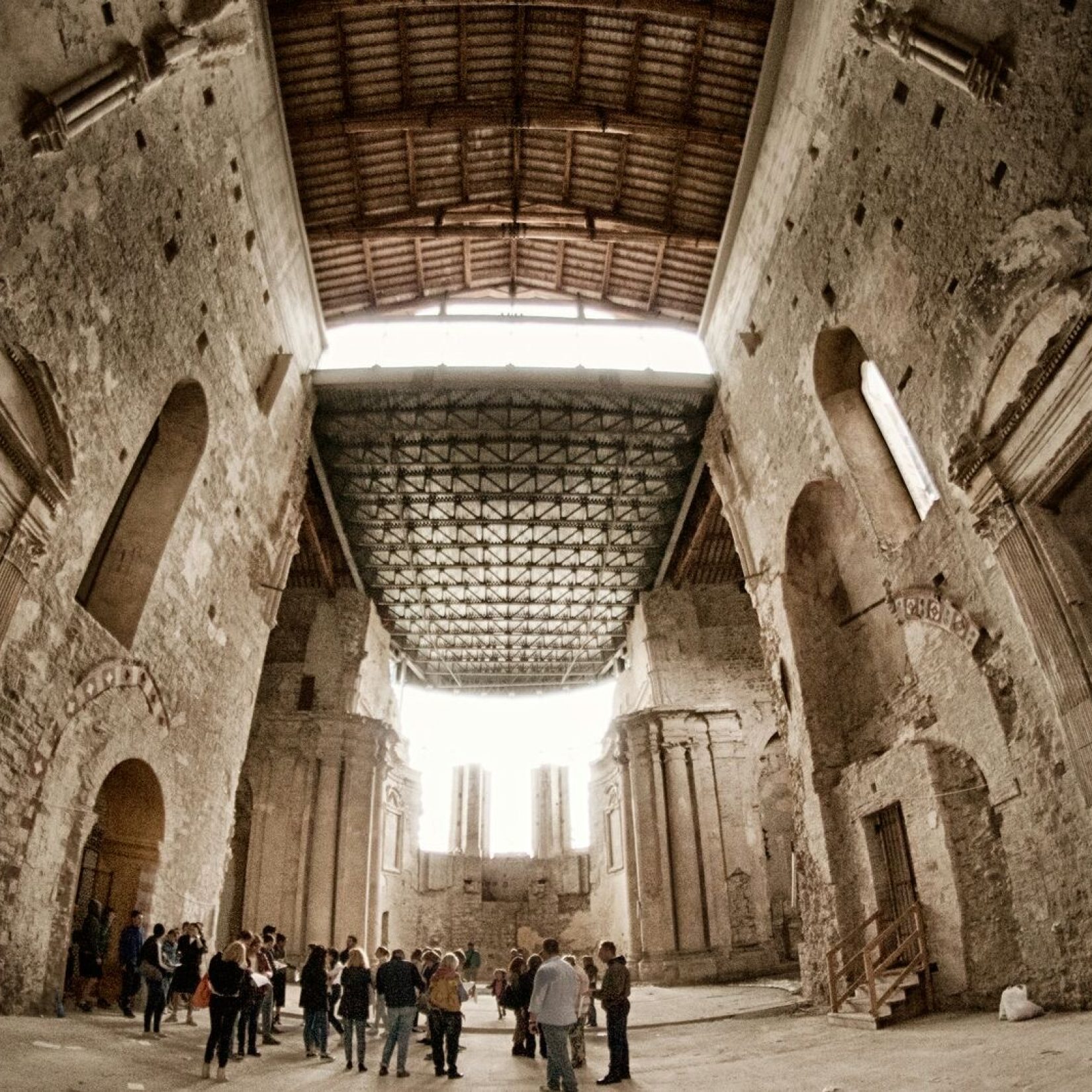Church of San Francesco al Prato

The San Francesco al Prato complex is located in one of the most beautiful of Perugia’s squares. This fascinating monument is definitely worth seeing if you are spending a day or a weekend in Perugia. After having admired the wonderful former church, take some time to relax on the lawn in front of it.
Dating back to the mid-13th century, the church of San Francesco al Prato was one of the most important Franciscan churches in the city. It had considerable religious, artistic, social and political importance.
Church of San Francesco al Prato: Architecture and History
The church was founded by Franciscans in 1251, and was the second Franciscan church. It takes its shape from the mother church, the Basilica of St. Francis, in Assisi. It rises above the ancient church of Santa Susanna, which gives its name to the surrounding district: Rione Santa Susanna.
The church has kept its original single nave structure; but over the centuries it has suffered many collapses and damage due to wars and natural disasters. As such, the church has required several consolidation and restructuring interventions. The church remained open to the elements for years due to the collapse of the vaults, following landslides and earthquakes. The altars and chapels were lost, but the beautiful polychrome facade was restored in 1926 by the architect Pietro Angelini.
The complex became very important for the community when the relics of Giles of Assisi (1190-1262), companion of St. Francis, arrived in the church.
From that moment, noble Perugian families began to identify the church of San Francesco al Prato as a prestigious burial place for their loved ones.
The complex thus quickly became the the Perugia “Pantheon”: nobles, generals, writers and jurists were buried there.
Church of San Francesco al Prato: the artworks
The growth of the church’s prestige had a further important effect. The noble Perugian families began to enrich it with fine works of art, including extraordinary masterpieces by Bonfigli, Perugino, Pinturicchio, Raffaello and Alfani.
Unfortunately, the damage caused to the church facilitated the theft of its artworks and the Napoleonic looting: one third of the masterpieces stolen from Umbria came from San Francesco al Prato. After Italian Unification (1861), the complex became a State property, and almost all the remaining artworks were taken away.
Many of these works of art are now exhibited in various national museums: the Pala Baglioni is in the Galleria Borghese; the “Incoronazione della Vergine” (also known as Pala degli Oddi, by Raffaello is in the Pinacoteca Vaticana together with the Resurrezione by Perugino. Other artworks are displayed in the Galleria Nazionale dell’Umbria in Perugia.
Church of San Francesco al Prato: What to See Inside
San Francesco al Prato is no longer used as a church. It has recently been restored and set up as an Auditorium, and will soon open to the public. In the summer, the auditorium becomes a historical and artistic setting for Umbria Jazz concerts.The modern auditorium, with over 500 seats, will also be used for dance shows, plays, conferences and other cultural and sporting events.
The San Francesco al Prato complex, which includes the Oratorio di san Bernardino, has been the seat of the Accademia di Belle Arti Pietro Vannucci and the Musa museum since the early 20th century.
Discover Perugia in a new and unique way through Articity tours! Articity Tours are designed for those who want to discover and visit Perugia, getting in touch with the people, the culture, the tradition and the local talents..



